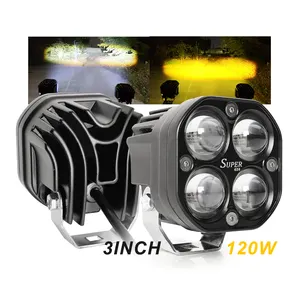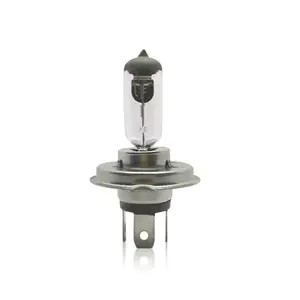(127687 products available)
































































































































 Ready to Ship
Ready to Ship

































































 Ready to Ship
Ready to Ship

















Lamp LED 24v is a type of light that operates at a voltage of 24 volts. This is a lower voltage than what is commonly used in household electrical systems, which are typically 120 or 240 volts. LED lights are known for their energy efficiency, long lifespan, and ability to produce bright light. They are used for various applications, including automotive lighting, outdoor lighting, and indoor lighting in areas where 24-volt power is available or used.
The LEDs are divided into several types based on their applications, as listed below:
LED Strips:
These are also known as LED tape lights, and they are flexible circuit boards with adhesive backs. They are used for accent lighting, under-cabinet lighting, and in any other application where a small, flexible light source is needed. They come in different colors and can be customized to project specific colors depending on the event mood required.
LED Light Bars:
These are linear lighting fixtures that use LEDs. They are enclosed in a thin, long housing. The light bars are used for task lighting, accent lighting, and in vehicles for exterior or interior lighting applications.
LED Modules:
These are discrete LED units that are assembled with a circuit board. They can be directly connected to a power source. The LED modules are designed for use in channel letters, signs, and illuminated displays. They are also suitable for outdoor lighting applications due to their weather-resistant designs.
LED Bulbs:
These are designed to replace traditional incandescent or halogen bulbs. The LED bulbs come in various shapes and sizes and are suitable for use in lamps, recessed lighting, and fixtures that are designed for incandescent bulbs.
LED Panel Lights:
These are lighting fixtures that consist of a flat panel with an LED light source. They provide uniform illumination and are commonly used in offices, commercial spaces, and modern home settings where they offer aesthetic value and functional lighting.
LED Ceiling Lights:
These are lights mounted directly on the ceiling. They are available in different configurations and designs, such as flush-mounted or recessed. The LEDs are energy efficient, and long lasting, making them suitable for use in residential and commercial settings.
LED lamps have various features that provide advancements for conventional lighting. Here are some key features alongside their functions:
Energy Efficiency
LED lamps are energy efficient. They consume less power as compared to traditional bulbs. This leads to reduced electricity bills and higher energy savings. Lower energy consumption is also eco-friendly and reduces carbon emissions.
Long Lifespan
LED lamps have a long operational life. They can last up to 50,000 hours or more. This reduces the frequency of bulb replacements, which in turn minimizes maintenance and replacement costs. The long lifespan feature offers reliability and consistent performance.
High Brightness
These bulbs have high luminous efficacy. They convert electrical energy into visible light efficiently. This provides high brightness with low wattage. LED lamps are available in a variety of brightness levels which are measured in lumens.
Low Heat Emission
LED lamp 24v emits very low heat as compared to traditional bulbs. This makes them safer for use in enclosed areas or spaces where heat-sensitive materials are stored. Low heat emission improves comfort in the illuminated area and reduces air conditioning costs in commercial spaces.
Directional Lighting
LEDs emit light in a specific direction. This makes them ideal for applications that need focused lighting. For example, task lighting and spotlights. The directional lighting feature minimizes the need for reflectors and lenses. This increases the lighting efficiency of the bulb.
Dimming Capabilities
Most LED lamps can be dimmed. This allows users to adjust the light intensity to meet their needs. Dimming lights can enhance the ambience and increase energy saving. Dimmable LEDs are compatible with specific dimmer switches that control their brightness levels.
Various Color Temperatures
LED lamps are available in different color temperatures. They range from warm white to cool white. This gives room for users to choose color temperatures that suit their preferences and needs. Warm white LEDs create a cozy and relaxing atmosphere while cool whites are energizing and ideal for task lighting.
Smart Features
LED lamp 24v can be equipped with smart features. For example, Bluetooth and Wi-Fi connectivity. These features allow users to control their lights remotely using smartphones or voice assistants. Smart LED lamps support automation and energy saving when they are integrated with smart home systems.
24V LED lamp has different applications; therefore, it is essential to understand the usage to avoid misuse. The following are some of the usage scenarios of a 24V LED lamp:
When choosing the LED 24v lamp, there are various things to consider. Here are some of them.
Consider the Power Consumption
When purchasing LED lamps, it's important to check their power consumption. Selecting lamps with lower power consumption is beneficial because it results in lower running costs. Additionally, lower power consumption lamps are more environmentally friendly, which is good for the environment.
Look at the Brightness
When buying LED lamps, it is important to check their brightness. The brightness of the LED lamps is measured in lumens. If a brighter LED lamp is desired, it is recommended to choose the one with more lumens. On the other hand, if dimmer light is required, the one with fewer lumens should be chosen.
Check the Color Temperature
The color temperature of LED lights determines their level of warmth. When purchasing, it is important to check the color temperature and choose the one that is most suitable for the intended use. Lamps with a color temperature of between 2700K and 3000K are warm and are ideal for cozy and comfortable spaces. On the other hand, those with a color temperature of 3500K to 4100K are neutral and are ideal for kitchens and bathrooms. Finally, LED lamps with a color temperature of 5000K to 6000K are considered cool and are mostly used in commercial settings or for tasks that require a lot of light.
Check the Lifespan
LED lamps are popular due to their long lifespan. When purchasing, it is important to check their lifespan and choose the one that will last longer. Choosing a lamp that will last longer is important since it will reduce the replacement frequency, which saves time and money.
Q1. What is the difference between 24V LED lamps and other LED lamps?
A1. The primary difference between 24V LED lights and other LED lights is that they operate at a higher voltage. They are brighter than lower-voltage LED lamps. They are also more energy-efficient because they convert a higher percentage of energy into light rather than heat.
Q2: How does one connect a 24V LED lamp to a power source?
A2: One can connect a 24V LED lamp to a 24V power source, such as a power supply or transformer. Ensure the power source is compatible with the LED lamp's specifications to prevent damage or malfunction.
Q3: Can 24V LED lamps be connected in series or parallel?
A3: Yes, it is possible to connect 24V LED lamps in series or parallel. When connected in series, the voltage is distributed evenly across the lamps. When connected in parallel, each lamp receives the full 24V voltage.
Q4: Do 24V LED lamps require a specific type of power supply?
A4: Yes, 24V LED lamps require a 24V power supply. The power supply should be compatible with the LED lamp's specifications, including wattage and amperage.
Q5: What are the common applications of 24V LED lamps?
A5: Common applications of 24V LED lamps include automotive lighting, outdoor lighting, architectural lighting, and decorative lighting. They are also used in appliances and electronics.